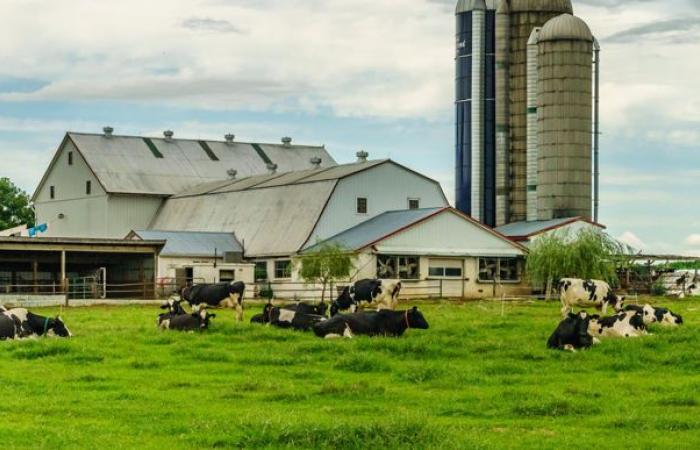These were just a few isolated cases, but the machine ran wild. Since the end of March, the United States has been facing a worrying spread of the avian flu virus on dairy farms. There are now twelve states that have recorded the disease with a last case in Idaho, the third largest dairy producer in the country.
Cases which do not stop at dairy cows alone, agricultural workers on contaminated farms having also contracted the disease. Now numbering three after a case in Michigan, the affected workers have experienced symptoms ranging from conjunctivitis to respiratory problems. The Center for Disease Control and Prevention (CDC) has confirmed an adaptation of the virus to mammals, but wants to be reassuring. “The virus detected in a human in Michigan supports the CDC’s conclusion that the risk to human health currently remains low,” the organization assured.
Milk and meat concerned
But the number of infected cows could be just the tip of the iceberg. The Food and Drug Administration (FDA) collected 297 samples of commercial dairy products between April and May, more than 20% of which contained traces of the virus. Information which has led several scientists to suggest that the number of contaminations would be much higher than the cases currently recorded.
Faced with the risk of psychosis among consumers, the Department of Agriculture (USDA) quickly reminded that the consumption of dairy products remains safe, thanks to pasteurization. But concern remains at all levels. The FDA sent a letter on June 6 to local authorities, listing a series of measures to be put in place to prevent transmission via raw milk. Monitoring plans for its transport and use must be put in place. Recalling also that all raw dairy products, even if they are only used for watering calves, “must be heat treated or pasteurized”. Milk from contaminated cows must in any case be thrown away.
Cow’s milk contaminated with the avian flu virus (04/24/2024)
If milk is a vector for avian flu, residues have appeared in meat. On May 28, the USDA revealed that “virus particles were detected in tissue samples, including diaphragm muscle, from a cow.” Wanting to be reassuring, he nevertheless made some recommendations in his press release. “While we have multiple safeguards in place to protect consumers, we continue to recommend handling raw meats properly and cooking them to a safe internal temperature.”
Vaccines in preparation
However, the consequences are not neutral for contaminated cows. While most manage to recover within 10 to 15 days, not all recover. Their weakened state made them more susceptible to other diseases, several animals ultimately succumbed. In other reported cases, breeders preferred to carry out euthanasia in the face of significant losses in production from sick cows. In all, nearly a hundred cows died.
To prepare for all eventualities, the authorities are now considering vaccinating dairy cows. Since the end of May, it has been announced that a messenger RNA vaccine is in preparation and that the first tests on dairy calves are imminent. A sign that the authorities are taking the problem very seriously, vaccines have also been ordered by the Health Department. For the population this time.






